NAVYPEDIA
 Support the project with paypal
Support the project with paypal
Ships
Name |
No |
Yard No | Builder |
Laid down |
Launched |
Comp |
Fate |
|---|---|---|---|---|---|---|---|
| Vixen | Lungley, Deptford | 1864 | 18.11.1865 | 1866 | sold 1896 | ||
| Viper | Dudgeon, Limehouse | 1864 | 21.12.1865 | 1867 | harbour service 1890, tank vessel 1901 | ||
| Waterwitch | Thames Iron Wks, Blackwall | 1864 | 28.6.1866 | 1867 | sold 4.1890 |
Technical data
| Displacement normal, t | Vixen, Viper: 1228 Waterwitch: 1280 |
|---|---|
| Displacement full, t | |
| Length, m | Vixen, Viper: 48.8 pp Waterwitch: 49.4 pp |
| Breadth, m | Vixen: 9.88 Viper: 9.75 Waterwitch: 9.78 |
| Draught, m | Vixen, Viper: 3.55 Waterwitch: 3.63 |
| No of shafts | Vixen, Viper: 2 Waterwitch: 1 water jet |
| Machinery | Vixen, Viper: 2 2-cyl HSE, 4 cylindrical boilers Waterwitch: 1 3-cyl horizontal Ruthven hydraulic reaction engine, 4 cylindrical boilers |
| Power, h. p. | Vixen: 740 Viper: 696 Waterwitch: 780 |
| Max speed, kts | Vixen, Waterwitch: 8.9 Viper: 9.6 |
| Fuel, t | Vixen, Viper: coal 110 Waterwitch: coal 100 |
| Endurance, nm(kts) | |
| Armour, mm | Iron; belt: 114 on 254mm teak backing, bulkheads: 114 |
| Armament | 2 x 1 - 178/16 MLR Mk III, 2 x 1 - 100/21 20pdr 16cwt BL |
| Complement | 80 |
Project history These three rather odd vessels represented an attempt to apply ironclad principles to the gunboat/gunvessel class and were largely experimental. They were not successful as t
These three rather odd vessels represented an attempt to apply ironclad principles to the gunboat/gunvessel class and were largely experimental. They were not successful as they were slow, unhandy and unseaworthy and they spent the majority of their careers in harbour service. Viper and Vixen were the first ships to be fitted with twin screw machinery and Vixen was the first gunboat of composite construction, having a timber hull on iron frames. Viper and Waterwitch were constructed of iron. Waterwitch was fitted with hydraulic reaction machinery, an early form of turbine propulsion, designed by J Ruthven upon principles laid down by James Rumsey in 1787. The engine drove a centrifugal pump which drew in water from openings in the ship's bottom forward and forced it out under high pressure at the stem giving a form of jet propulsion. The whole system was reversible and Waterwitch was double-ended with a rudder and ram shape at both bow and stern. Her engine room was positioned amidships with the boiler room abaft it which gave her an unusual profile as the funnel was positioned well aft between the main- and mizzenmasts. She proved almost unmanoeuvrable and was a complete failure, although this was as much the fault of the design of the ship as that of the machinery, and she was withdrawn from service before either of her sisters. Modernizations: None.
Naval service
Viper and Vixen were towed to Bermuda, being insufficiency seaworthy to undertake the journey under their own power, where they served as harbour vessels until the end of their careers; Viper was converted to a tank vessel in 1901.
 HOME
HOME FIGHTING SHIPS OF THE WORLD
FIGHTING SHIPS OF THE WORLD UNITED KINGDOM
UNITED KINGDOM OTHER FIGHTING SHIPS
OTHER FIGHTING SHIPS VIXEN armoured gun vessels (3, 1866 - 1867)
VIXEN armoured gun vessels (3, 1866 - 1867)
